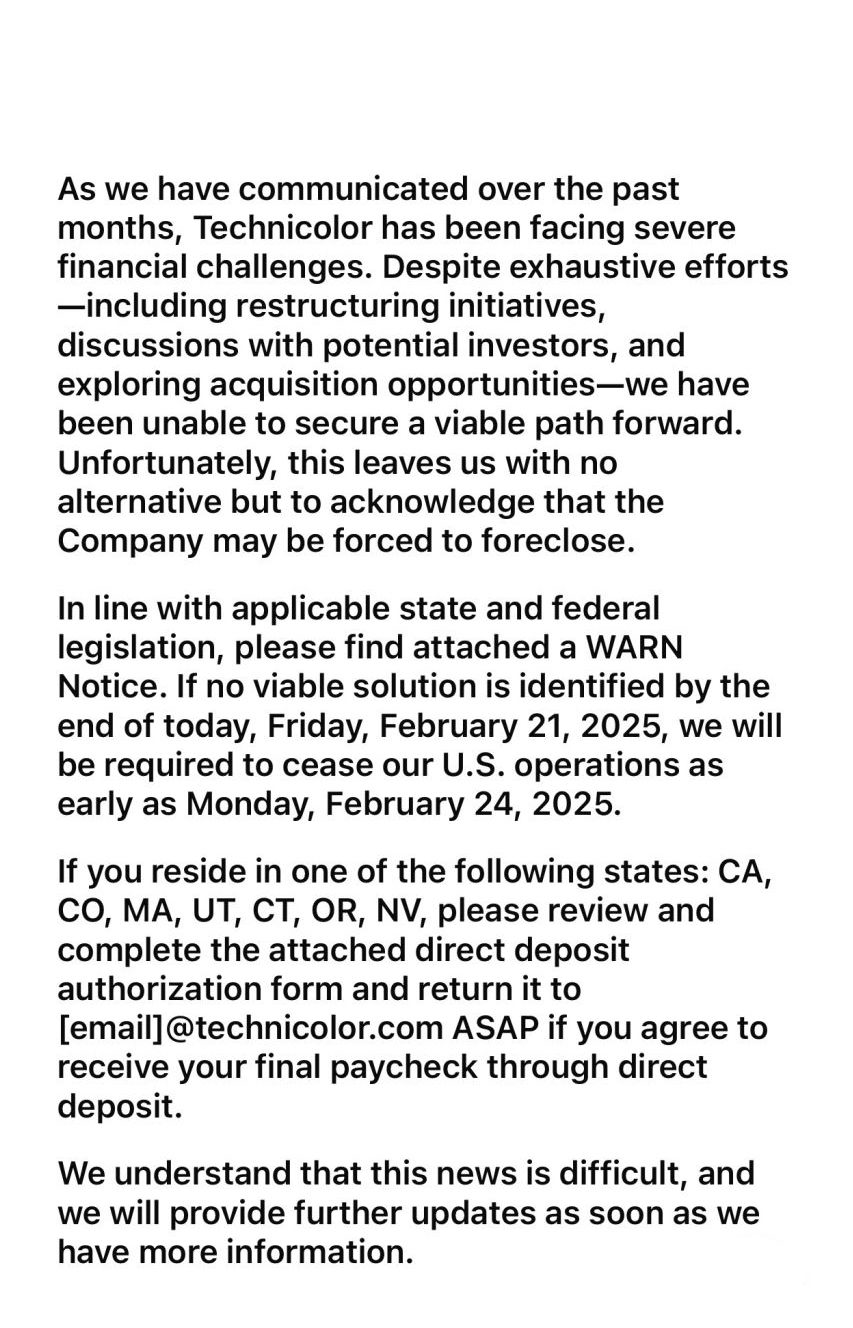MUMBAI: A decade and two years after the dramatic collapse of Oscar-winning studio Rhythm & Hues, history appears to be repeating itself as Technicolor faces imminent shutdown, highlighting the persistent vulnerabilities in the global visual effects industry.
The parallels are striking. Like Rhythm & Hues, which ironically filed for bankruptcy just weeks before winning an Academy Award for Life of Pi in 2013, Technicolor's potential closure comes despite its stellar creative achievements, including work on blockbusters like The Lion King and The Jungle Book.
Both cases expose a fundamental flaw in the VFX industry's business model: studios maintaining expensive executive operations in Western markets while relying on lower-paid artists in outsourcing hubs like India. This structure, which prioritised top-heavy management over sustainable artist compensation, has proven unsustainable twice over.
Technicolor's recent mismanagement compounds these structural issues. The company's third-quarter 2023 results tell a devastating story: revenue declines of over 45 per cent across its creative divisions, masked by corporate buzzwords about "transformation journeys.”
The appointment of an interim chief executive from the car rental industry, rather than someone with media expertise, echoes the kind of decision-making that plagued Rhythm & Hues in its final days.
"The industry hasn't learned from its past," notes one veteran VFX artist who witnessed both collapses. "When Rhythm & Hues fell, we said 'never again,' but here we are, watching another giant stumble under the weight of mismanagement and unsustainable business practices."
Technicolor, the Paris-headquartered company has begun issuing Worker Adjustment and Retraining Notification (WARN) notices to its US employees, alerting them of potential mass layoffs and closure. The shutdown would affect thousands of visual effects artists across the company’s global operations in the US, UK, Canada, and India..
"Technicolor has been facing severe financial challenges," states the WARN notice obtained by us at indiantelevision.com "Despite exhaustive efforts — including restructuring initiatives, discussions with potential investors, and exploring acquisition opportunities — we have been unable to secure a viable path forward."
The issuance of WARN notices to US employees, signalling potential closure by 24 February, eerily mirrors the sudden unravelling of Rhythm & Hues. Then, as now, thousands of artists across global studios face uncertain futures, while ongoing projects hang in limbo.
This second major collapse in a decade raises serious questions about the sustainability of the VFX industry's current model. Despite the increasing demand for visual effects in film and television, the businesses creating these spectacles continue to struggle with profitability, suggesting that fundamental reform may be necessary for the industry's survival.
The content creation industry needs to understand, creating realistic visuals costs, and the cheques - probably much fatter than given out now - need to be kept aside for those bringing realism to green-screen shot sequences. These days, VFX is the real hero of most action filled films; without it most films would fall flat and seem uninteresting. While onscreen talent walks away with tens of hundreds of millions of the box office collections, the VFX folks who labour on a film for a couple of years -- after putting in millions of dollars for software licences and hardware - end up with as much or even less than what the onscreen talent does in terms of profits.
What makes Technicolor's potential demise particularly troubling is that it comes despite the lessons of Rhythm & Hues' collapse. The company's aggressive merger strategy and failure to maintain operational efficiency - evidenced by missed EBITDA targets and withdrawn financial outlooks - suggest that even recent history's harsh lessons went unheeded.
As employees in seven US states prepare for possible closure, submitting direct deposit details for final paycheques, the industry faces a moment of reckoning. The question remains: how many giants must fall before the visual effects industry finds a sustainable path forward?
The development also raises concerns about the global AVGC-XR (Animation, Visual Effects, Gaming and Extended Reality) industry, particularly in markets like India where both animation and visual effects sectors are reportedly struggling despite official optimism.
Industry observers await Monday's developments as Technicolor continues last-minute efforts to keep its doors open, while the future of thousands of visual effects artists hangs in the balance.






